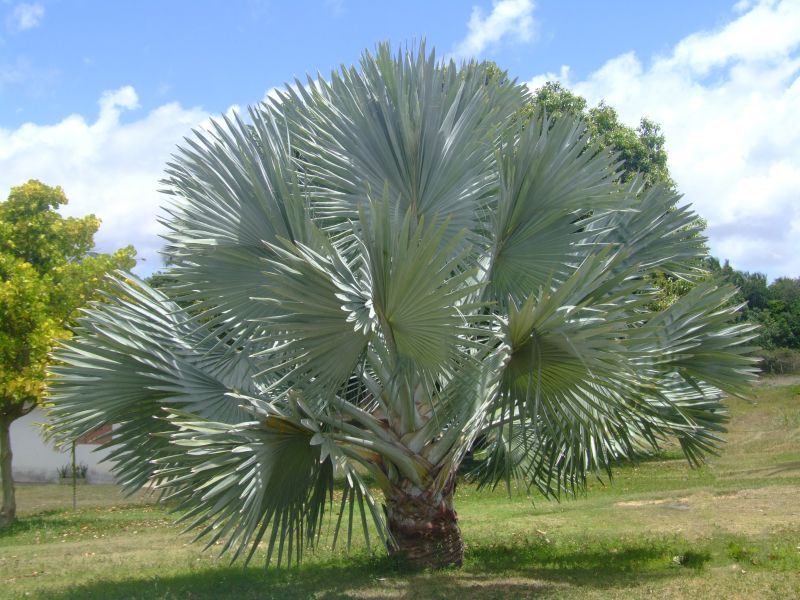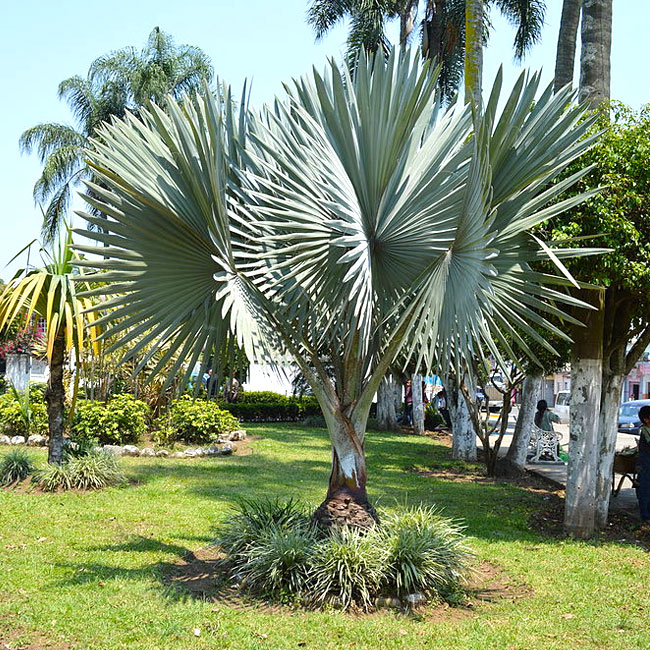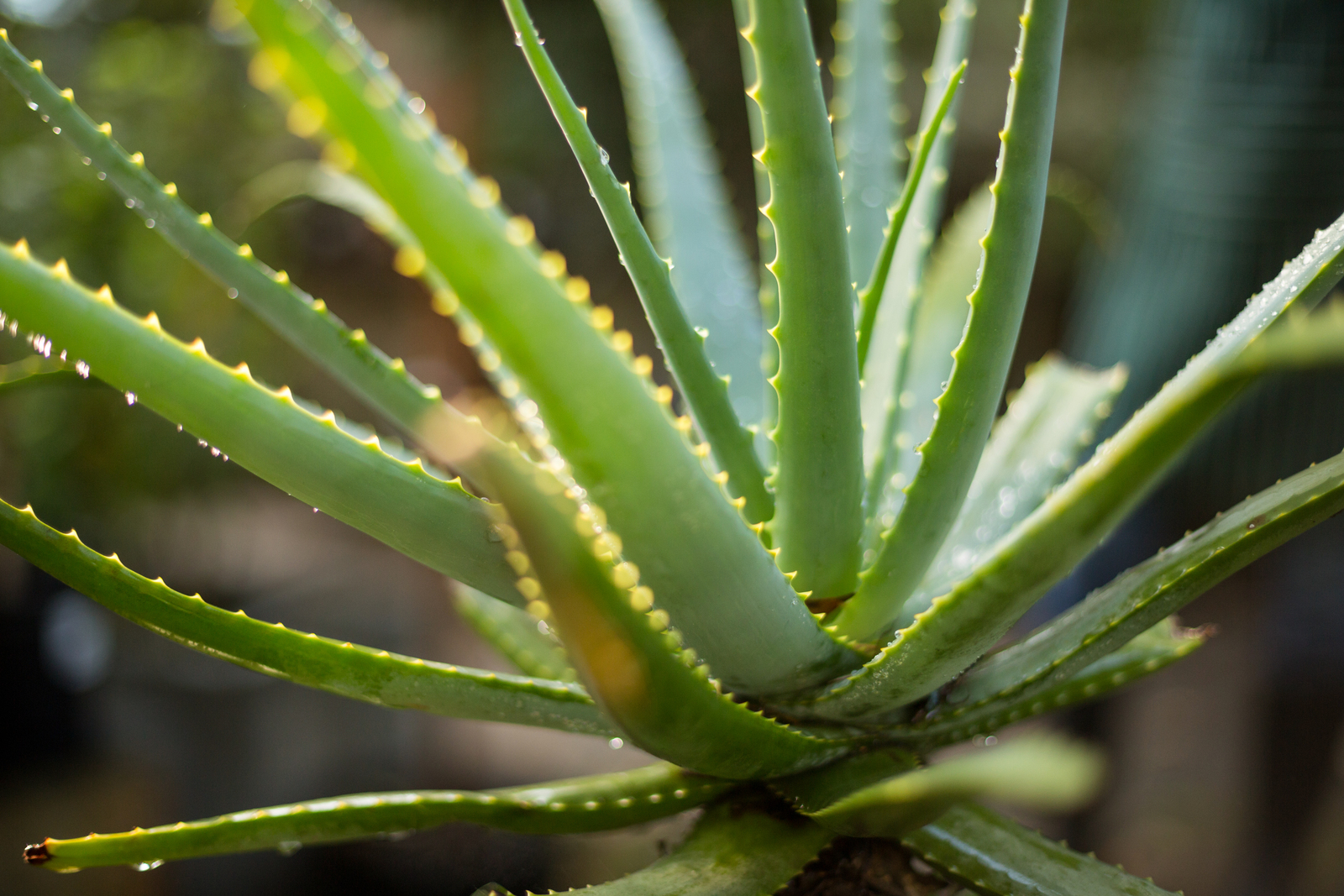Bismarck Palm Tree: Striking Silver-Blue Fronds
Bismarck palm trees (Bismarckia nobilis) are native to Madagascar, and are known for their striking silver-blue fronds.
These palm trees are popular in commercial and large residential settings. Bismark palms make a dramatic impact when planted along a long, winding driveway or wide walkway.
Bismarckia nobilis (also known as Bismarck Palm or Bismark Palm) belongs to the Arecaceae family, and can be planted year round in USDA hardiness zones 10 through 11. The bismark palm tree is considered to be low maintenance - it will adapt to a variety of soil types and will thrive in partial to full sun.

Bismarck Palm Tree (Bismarckia nobilis). Photo by Wilson Felix da Costa, Wiki Commons
Bismark palms can grow up to fifty feet tall, with a spread of ten to fifteen feet wide. Silver-blue fronds fan out from a smooth trunk to form a spherical crown or canopy. The waxy, fan-like palm fronds are silver-blue in color, with a leaf blade length of thirty-six inches. These palm trees are planted outdoors as single specimens in residential sized landscapes, or can be planted in a line along a long driveway or walkway.

Bismarck Palm (Bismarckia nobilis). Photo by Alejandro Linares Garcia, Wiki Commons
Bismarck Palm Care
Bismark palm trees add dramatic tropical flare to residential and commercial landscape designs. Single specimens are typically used as a focal point in the landscape. Several trees can be planted in a row along a driveway or winding road in large residential and commercial landscapes.
Tips for Planting
USDA Hardiness Zone – Can be planted year-round in zones 10 – 11.
Location – Choose a location that receives partial to full sun. The location should be large enough to accommodate full growth. Bismarckia nobilis palm trees should not be planted near structures or power lines. Allow fifteen feet between plantings.
Soil – Bismark palms like sandy, well-draining soil.
Steps for Planting
- Dig a hole twice as wide as the root ball. Note: The hole should be as deep as the root ball is tall. The soil surrounding the roots should be loose to allow for easy establishment.
- When placing the root ball in the hole, make sure the tree is standing straight. Fill the hole halfway with soil and pack firmly. Fill the hole with the remaining soil while packing firmly around the base of the palm tree. Large, newly planted palm trees may need to be protected from winds and storms by using a brace.
- Water thoroughly after planting is completed. Newly planted palms like lots of water. For the first two to three weeks, water daily. Continue watering three times a week. Once established, palms require minimal watering. During the warmer months, water approximately two to three times per week. Water approximately once a week during the winter.
- Approximately six weeks after planting, fertilize Bismarck palms with a high-quality palm tree fertilizer. Fertilization schedule will be three times a year thereafter.
Note: Choose the location wisely; transplanting palm trees once they are established is risky.
- Home
- Palm Tree Species
- Bismarck Palm



